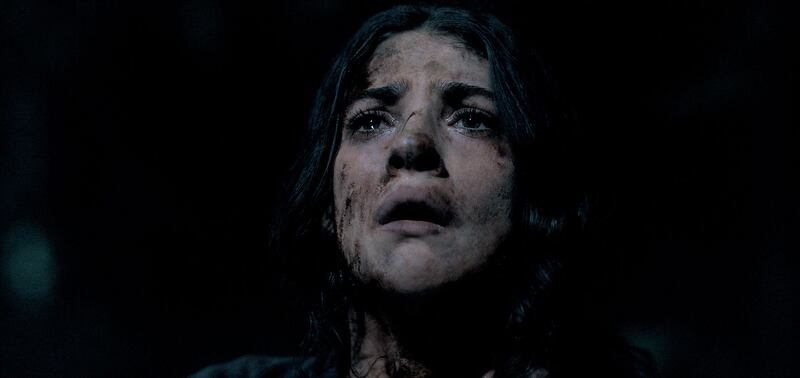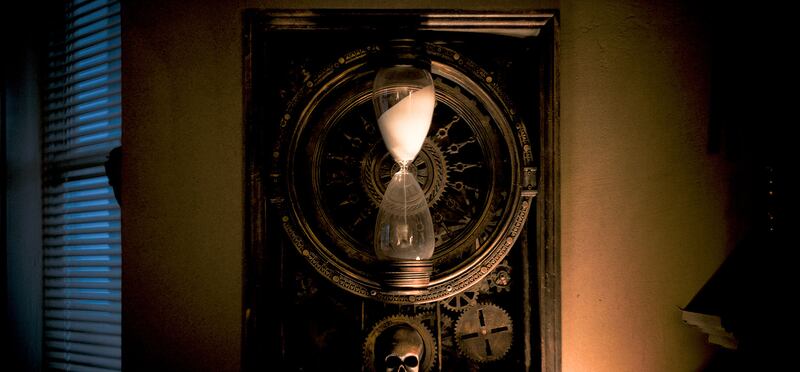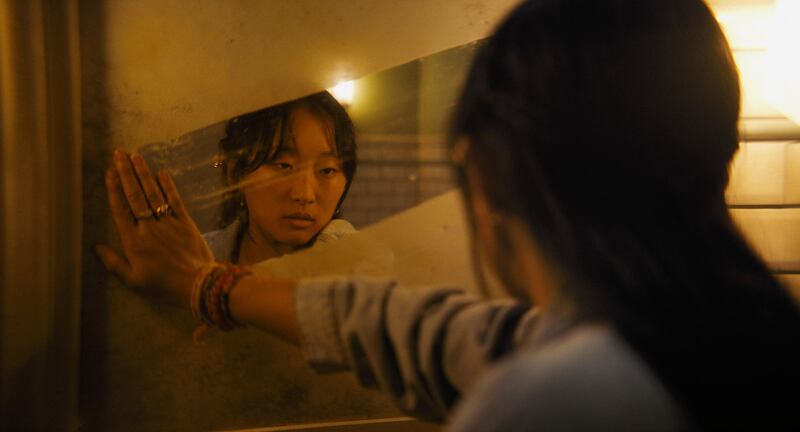How do you cinematically adapt a video game that itself was designed as an interactive movie? Until Dawn’s answer is that you create something that resembles its source material in name only.
Returning to the horror fold after his forays into subpar superhero spectaculars (Shazam! and its sequel), director David F. Sandberg crafts a gory riff on Groundhog Day, trapping a group of friends in a nocturnal cycle of mayhem and madness. His whirligig contraption, however, lacks any sense of internal logic and is even lighter on surprising scares, dispensing only clichés that are as moldy as the haunted house in which his characters are confined.
Whereas its 2015 PlayStation forebear was headlined by pre-Oscar-winning Rami Malek and Hayden Panettiere (in motion-capture and vocal turns), Until Dawn stars a bunch of unknowns, save for Peter Stormare, who reprises his game role as a physician with a particular interest in these innocents’ unholy condition.
Focusing on anonymous, disposable, and frequently annoying kids is one of many ways in which Sandberg (working from Gary Dauberman and Blair Butler’s creaky script) hews to genre convention. He doubles down on familiar spooky elements by his tale’s midway point, when it’s already indulged in, among other things, possessions, masked psychos, screeching ghouls, roaring monsters, creepy dolls, alien titans, aged witches, and various doors and rocking chairs that move without anyone (visible) touching them.

Until Dawn is a Halloween grab bag of treats moviegoers have ingested innumerable times before, although that’s not immediately clear at outset, when its protagonists arrive at the final stop on a trip designed to retrace the steps of missing-for-a-year Melanie (Maia Mitchell).
The leader of this crew is the unluckily named Clover (Ella Rubin), who’s Mel’s grieving sister and who’s accompanied on the trek by her ex-beau Max (Michael Cimino), bisexual Nina (Odessa A’zion) and her new beau Abel (Belmont Cameli), and amateur psychic Megan (Ji-young Yoo). At a convenience store, they’re told by the clerk (Stormare) that most people go missing in these parts at Glore Valley. On their drive to this remote location, the quintet is overwhelmed by a terrible tempest that, strangely, engulfs the entire region except for a Welcome Center that magically appears in the eye of the storm.
Inside the abandoned house, Clover and company find a guest book that boasts multiple entries from each prior guest—including Melanie, whose handwriting devolves into unintelligible scribbles—and a clockwork gizmo on the wall that boasts a giant hourglass.
Before they can figure out what’s going on in this weirdo locale, they’re attacked by a giant slasher-movie archetype in a disfigured clown mask who dispatches them with relative ease. Rather than passing on to the great beyond, however, they awaken at the very moment they first arrived at the Welcome Center. No sooner have they gotten their bearings than they’re faced with another mortal threat—one different than the last—which they’re unprepared to combat, thereby revealing that they’ve become ensnared them in a seemingly endless loop of untimely and decidedly unpleasant demises at the hands of disparate malevolent forces.
Clover and her friends are perpetually reset in the way that games afford players multiple lives, and the film’s device specifically recalls its console ancestor’s branching-narrative form, which allowed for several storylines and endings depending on the choices made throughout its tale. Unfortunately, Sandberg doesn’t care much about connecting things to his predecessor, nor is he very interested in explaining these baffling circumstances.
That’s sufficient for a time; the proceedings maintain a bit of initial intrigue as these hapless souls try to comprehend the nature of their dire situation. Scattershot plotting, though, swiftly rears its ugly head, with hazards materializing at random, such as an early retreat to a bathroom where water proves to be an explosive danger.

Until Dawn’s saga is original and yet novelty is in short supply as Clover and her buddies bicker with each other, futilely fend off deadly creatures, and kill themselves (to facilitate a restart) when their comrades fail to make it to dawn—the de facto finish line at which point this chaos concludes.
After a few deaths, the film gets lazy, relaying some of the crew’s later murders via quick-hit cell videos that add a touch of found-footage flavor to this derivative stew. As an enigmatic figure interested in (and perhaps orchestrating?) this ceaseless carnage, Stormare is his usual sinister self, enunciating with uncanny inflections which suggest that he’s long since lost his grip on reality. Anyone hoping for an explanation for the heroes’ do-over dilemma, alas, will be left wanting, as Dauberman and Butler’s screenplay prefers murkiness, with Stormare imparting a bunch of gibberish that renders the mystery more confusing than clear.
Collaborating with cinematographer Maxime Alexandre, Sandberg drenches his macabre action in suitably grim, decrepit hues, whether his characters are racing through a witch’s den, a sunken town’s dilapidated residences, or a gnarly sanitarium.
As with his Lights Out and Annabelle: Creation, the director telegraphs his jolts too conventionally; every wannabe-frightening moment is undercut by a build-up (all patient walks down hallways and peeks around corners in unsettling quiet) that’s painfully obvious. In cine-carnival rides such as this, startling audiences is dependent on finely tuned pacing and unpredictable rhythms. With neither, Until Dawn makes a lot of noise but rarely raises one’s blood pressure, much less generates a level of feverish anxiety commensurate with Clover and her pals’ predicament.

Given that the game was co-penned by indie-horror icon Larry Fessenden (Wendigo), it’s somewhat baffling that Until Dawn ditches his story in favor of something this run-of-the-mill and half-baked. Despite an under-30 cast that’s perfectly capable of running and screaming when necessary (which is often), there’s no personality to this pandemonium, its evil beasts generic and its relive-the-night structure under-exploited.
Somewhere buried deep inside this nightmare are ideas about loss, grief, and togetherness, but Sandberg never fully or coherently unearths them, instead resorting to concepts and stunts that are so tiresome, they make this dud the equivalent of an exhausting and unfulfilling all-nighter.
The post ‘Until Dawn’ Raises the Bar for How Bad Video Game Movies Can Be appeared first on The Daily Beast.




